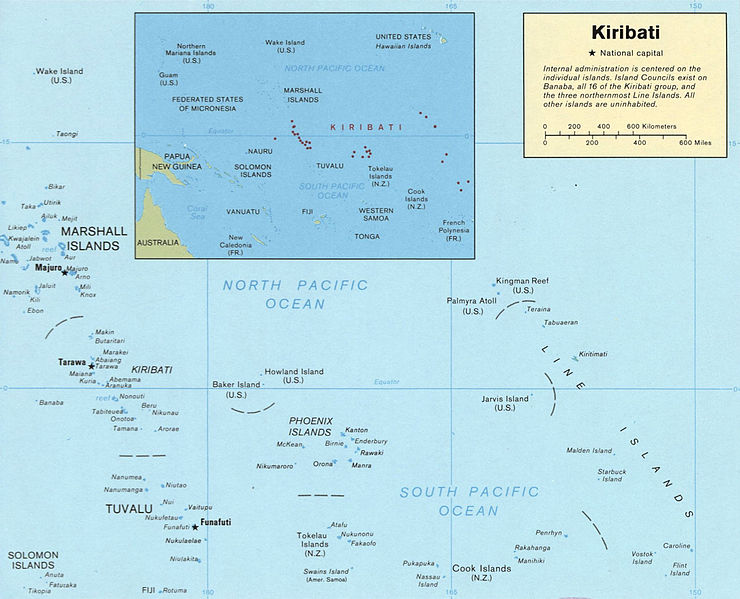By Mass Communication Specialist 3rd Class Samantha J. Webb, Navy Public Affairs Support Element West
TARAWA, Republic of Kiribati (NNS) -- The amphibious dock landing ship USS Pearl Harbor (LSD 52) arrived in the Republic of Kiribati for Pacific Partnership 2013, July 15.
New Zealand has assumed the role as the phase lead for Kiribati marking the first time in the mission's eight years that a partner nation other than the U.S. has taken the lead on a phase of the mission.
"This is a great first step in continuing our capacity building in the conduct and coordination of humanitarian activities," said Royal New Zealand Navy Capt. Tony Millar, phase lead and deputy mission commander. "It also marks a great amount of confidence that the U.S. has in New Zealand's ability to do such work."
Millar said that, in taking the lead for this phase of the largest disaster-response preparedness mission in the Indo-Asia-Pacific region, he expects everyone to grow professionally from the collaboration between New Zealand and U.S. forces.
U.S. Navy Capt. Wallace Lovely, Pacific Partnership mission commander, said that New Zealand leadership has already shown that they have been forward leaning and detailed in planning. He said they have been following through on all the expectations he is set for them during this phase.
"We are all focused on the same thing in this region," said Lovely. "We are preparing ourselves for humanitarian assistance disaster relief in the event that we have to respond collectively."
Mission personnel will be working alongside Kiribati professionals to conduct varied projects on the ground including medical and dental care, health education, water filtration system evaluations, school refurbishments, bridge repairs and optometry clinics among others.
Throughout the 11 days scheduled for this mission port, experts will exchange information with local officials in the fields of medicine, dentistry, agriculture, firefighting and more in order to create a lasting impact in Kiribati, the Pacific Ocean nation with just greater than 100,000 people.
The unique mission utilizes the strengths of 10 partner nations including Australia, Canada, Colombia, France, Japan, Malaysia, Singapore, South Korea, New Zealand and the United States to improve maritime security through disaster preparedness.
Millar said that New Zealanders pride themselves on knowing the Polynesian and Melanesian people.
"We've found that we are great conduits in passing information from the likes of the U.S. to our Southeast Pacific partners," said Millar.
HMNZS Manawanui (A09), New Zealand's diving support vessel, will also be in Kiribati for Pacific Partnership 2013. U.S. Navy divers will join New Zealand divers from that ship to participate in searches in the Tarawa Atoll for unexploded ordinance from World War II.
In addition to the HMNZS Manawanui, USNS Matthew Perry (T-AKE-9), a dry cargo and ammunition ship, will be off the coast of Kiribati to provide USS Pearl Harbor with supply and helicopter support from two SA-330J Puma helicopters that will aid in quickly transporting mission personnel ashore, such as Canadian Forces Cpl. Kristina McEachern.
McEachern is a dental technician who will be working with mission dental professionals from other militaries and nongovernmental organizations to evaluate and provide care for patients in Kiribati, a nation that McEachern has never visited before.
"This is definitely a once in a lifetime thing for me," said McEachern. "I'm really looking forward to it."
Lovely said that Kiribati leadership is excited to welcome Pacific Partnership with open arms.
Kiribati is one of six host nations participating in Pacific Partnership 2013, along with Samoa, Tonga, Papua New Guinea, Republic of the Marshall Islands and Solomon Islands.


 Logging you in...
Logging you in...